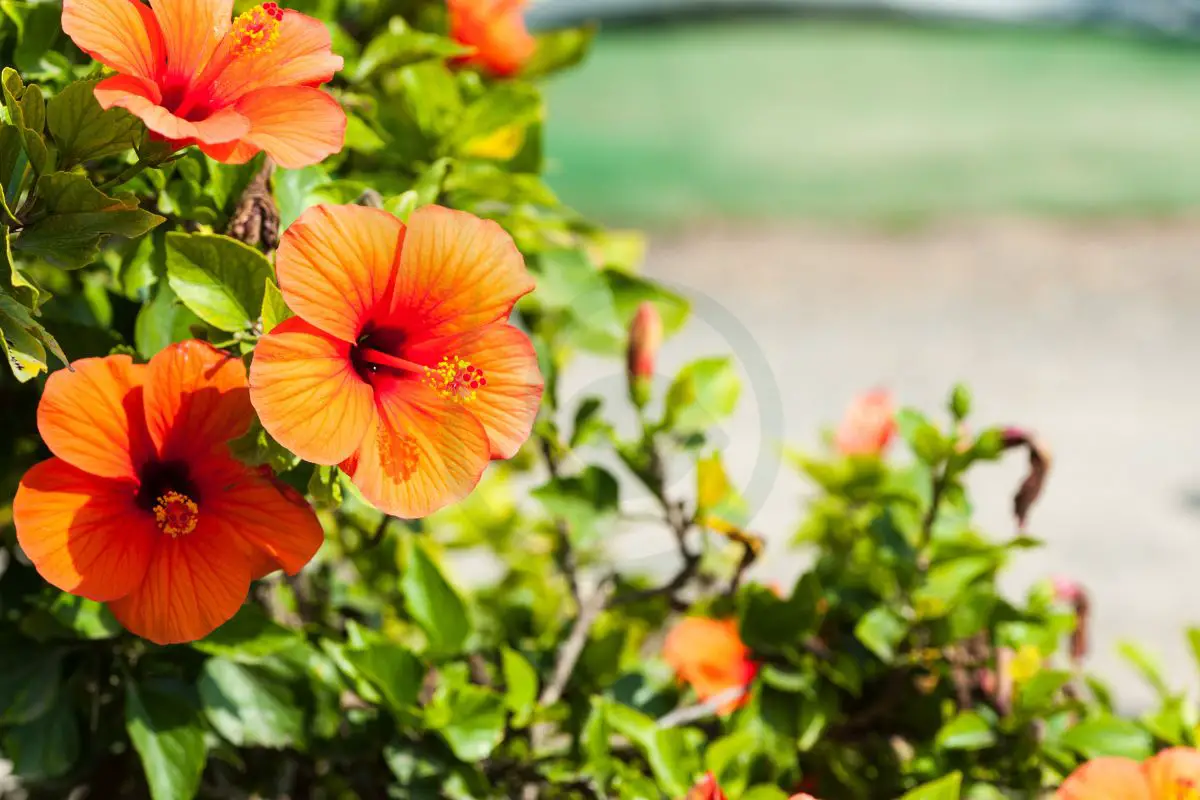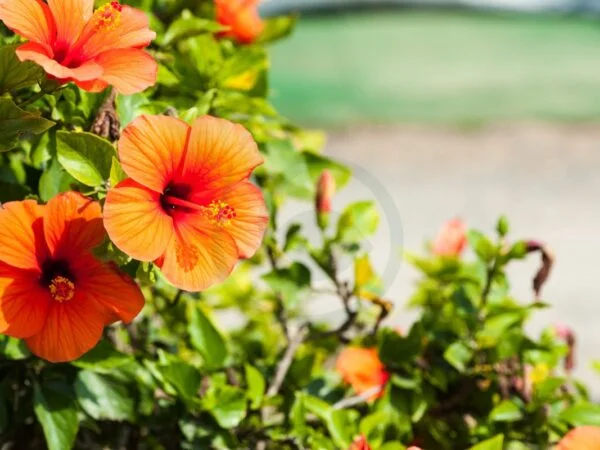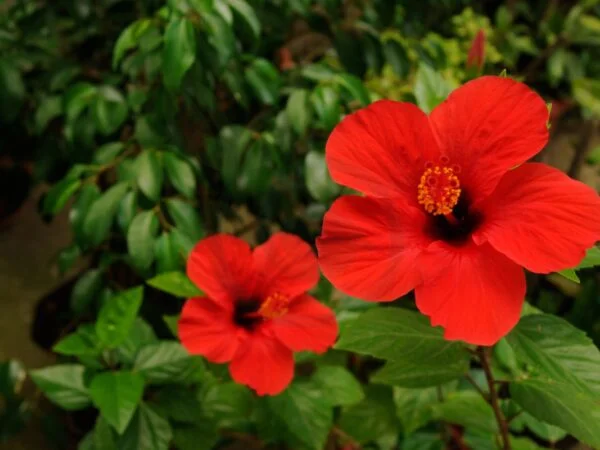Wondering if it's time to trim your hibiscus plant? From when to wield the shears to the best techniques for promoting healthy growth, we've got you covered.
Key Takeaways
- Pruning Hibiscus: Cutting back a hibiscus plant is essential for its health and blooming.
- Timing is Key: Understand the best time to do selective pruning and cut buds on your hibiscus for optimal results.
- Techniques Matter: Learn the proper pruning techniques to avoid damaging the plant by hard pruning old branches, cutting shoots.
- Regular Pruning Benefits: Pruning promotes new growth, enhances flowering, and maintains plant shape by cutting old branches at the base to encourage new shoots.
- Avoid Common Mistakes: Be cautious of over-pruning or cutting at the wrong angle to prevent harm to the plant.
- Aftercare is Crucial: Provide proper care post-pruning to ensure the hibiscus thrives.
Understanding Hibiscus
Types Varieties
Hibiscus plants come in various types, including Tropical Hibiscus with large, showy flowers and Hardy Hibiscus known for their cold tolerance. Each variety boasts unique characteristics, from flower colors to growth habits. When selecting a hibiscus for your garden, consider factors like climate and space requirements.
Growth Habits
Hibiscus plants exhibit versatile growth habits, thriving in both tropical and subtropical climates. Their ability to adapt to different environments makes them popular choices for gardens worldwide. Factors such as sunlight exposure, soil quality, and watering frequency significantly impact the growth of hibiscus plants.
Seasonal Care
Proper seasonal care is crucial for maintaining healthy hibiscus plants throughout the year. Changes in temperature and daylight hours affect their growth and blooming cycles. To ensure optimal health, adjust watering schedules, fertilization routines, and pruning practices based on the season.
Pruning Basics
Best Time
Spring Pruning
Pruning hibiscus plants in spring is crucial for maintaining their health and promoting robust growth. This process helps remove dead or damaged branches, allowing the plant to focus its energy on new growth. Spring pruning also stimulates flower production and ensures a vibrant bloom during the growing season.
To prune hibiscus in spring, start by removing any dead or diseased branches using sharp and clean pruning shears. Next, trim back overgrown stems to encourage bushier growth. Finally, shape the plant by cutting back long shoots to maintain a compact and balanced appearance. Spring pruning not only enhances the overall aesthetics of the hibiscus but also improves air circulation around the plant, reducing the risk of diseases.
Post-Bloom
After the blooming period, it's essential to provide proper care to sustain the vitality of hibiscus plants. Begin by deadheading spent flowers, which redirects energy back into the plant for new growth. Ensure adequate watering and fertilization to support post-blooming recovery. To encourage fresh blooms, consider applying a balanced fertilizer high in potassium.
To promote new growth post-bloom, prune lightly to shape the plant and remove any weak or crossing branches. inspect for pests and treat any infestations promptly to prevent damage. By maintaining optimal care after blooming, you set your hibiscus up for success in subsequent flowering cycles.
Tools Required
- Sharp pruning shears
- Gloves for hand protection
- Disinfectant for cleaning tools
Using sharp and clean pruning shears is vital for making precise cuts that promote quick healing of wounds on hibiscus plants. Clean tools help prevent the spread of diseases between plants. Having the right tools on hand makes pruning tasks more efficient and reduces stress on both you and the plant.
Safety Tips
When pruning hibiscus plants, always wear protective gear like gloves to shield your hands from thorns and cuts. Stay alert while handling sharp tools to avoid accidents or injuries during the process. Being cautious and attentive ensures a safe and successful pruning session without any mishaps.
Pruning Techniques
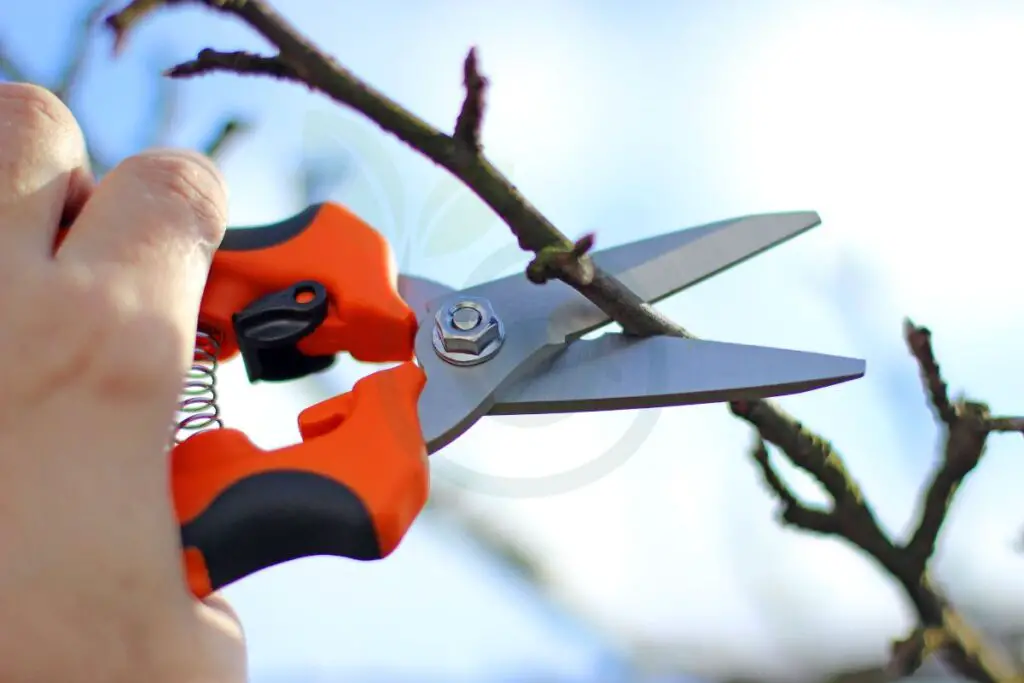
Deadheading
Deadheading involves removing spent flowers from the hibiscus plant to encourage new growth and blooming. Benefits of deadheading include promoting continuous flowering and maintaining a neat appearance. To correctly deadhead hibiscus plants, locate faded blooms and trim them just above the nearest leaf node.
Shaping
Shaping hibiscus plants is crucial for enhancing their visual appeal and overall aesthetics in gardens. The way you shape your hibiscus can significantly impact its appearance, making it more appealing. To shape hibiscus plants effectively, prune back overgrown branches to maintain a balanced look.
Thinning
Thinning hibiscus plants involves removing excess growth to improve air circulation around the plant. The benefits of thinning include reducing the risk of diseases and allowing sunlight to reach all parts of the plant. For effective thinning, identify crowded areas within the plant and selectively remove excess stems.
Benefits of Pruning
Enhances Blooming
Pruning encourages hibiscus plants to bloom more frequently and abundantly. By removing dead or overgrown branches, you allow the plant to focus its energy on producing vibrant flowers. Proper pruning techniques, such as cutting above a node at a 45-degree angle, can stimulate new growth and flower development. To maximize blooming potential, prune after each flowering cycle and remove any diseased or damaged parts.
Disease Prevention
Pruning plays a crucial role in preventing diseases that commonly afflict hibiscus plants. Regularly trimming branches helps improve air circulation around the plant, reducing moisture buildup that can lead to fungal infections. By promptly removing infected or decaying sections, you limit the spread of diseases like powdery mildew or leaf spot. Maintaining plant health through proactive pruning practices can significantly reduce the risk of disease outbreaks.
Growth Promotion
Pruning is essential for promoting healthy growth in hibiscus plants. By strategically cutting back branches, you encourage the development of new shoots and lateral growth. This process not only enhances the plant's overall appearance but also stimulates root growth and nutrient absorption. To promote vigorous growth, focus on selective pruning to shape the plant while maintaining its structural integrity. Regular pruning sessions throughout the growing season can help achieve optimal growth results.
Step-by-Step Guide
Assessing the Plant
Before pruning a hibiscus plant, inspect the overall health of the plant by checking for yellowing leaves, pest infestations, or diseased areas. Look for signs like stunted growth or lack of new blooms that may indicate the need for pruning. To evaluate, create a checklist: leaf color, presence of pests, and overall growth rate.
Making the Cuts
When cutting back a hibiscus, ensure you make your cuts at a 45-degree angle to promote proper healing. Remember to use sharp, clean pruning shears to prevent damage to the plant. Make precise cuts just above a healthy bud or leaf node to encourage new growth. A visual guide can be helpful in understanding where and how to make cuts accurately.
Post-Pruning Care
After pruning, focus on providing adequate care to help the plant recover effectively. To promote healing, avoid overwatering and provide balanced fertilization following pruning. Monitor the plant closely for any signs of stress or disease post-pruning. Remember to water regularly but not excessively, ensuring the soil remains moist but not waterlogged.
Common Mistakes
Over Pruning
Over-pruning hibiscus plants can have detrimental effects, such as stunting growth and reducing flowering. Excessive cutting can weaken the plant, making it more susceptible to diseases and pests. To avoid this, prune lightly and maintain a balance between removing old growth and encouraging new shoots.
Pruning too much can lead to nutrient deficiencies, impacting the overall health of the plant. It's crucial to understand the plant's growth patterns and prune accordingly. Regular monitoring of the plant's condition can help in determining when pruning is necessary without going overboard.
Wrong Season
Pruning hibiscus plants at the wrong time, such as during the flowering season, can hinder their ability to bloom. Trimming during active growth periods can stress the plant and reduce its blooming potential. It's best to prune hibiscus plants during their dormant phase or right before new growth begins in spring.
Choosing the right time for pruning is essential for promoting healthy growth and vibrant blooms. By pruning at the correct season, you allow the plant to recover effectively and prepare for a robust flowering season ahead.
Improper Tools
Using improper tools for pruning hibiscus plants can cause damage that affects their overall health. Dull or incorrect tools can result in ragged cuts, leaving the plant vulnerable to infections. Select sharp, clean tools like pruning shears or loppers specifically designed for cutting branches of varying thicknesses.
When choosing tools, consider the size of your hibiscus plant and the type of cuts needed. Proper tools ensure clean cuts that promote faster healing and minimize stress on the plant. Regularly sharpening and maintaining your tools is essential for effective pruning practices.
Aftercare Tips
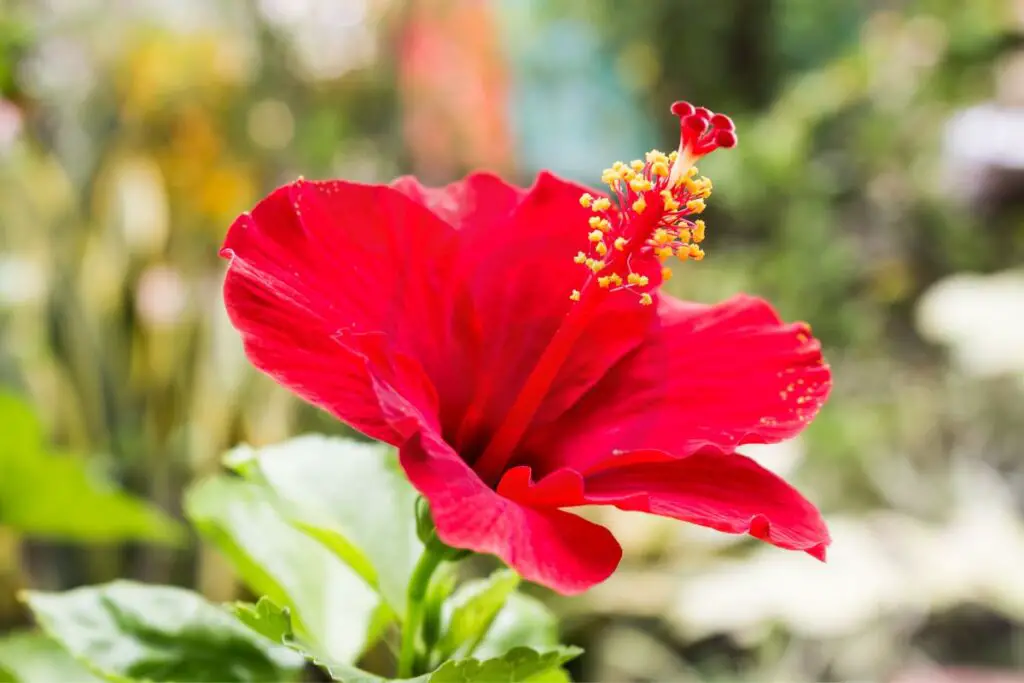
Watering Needs
Hibiscus plants require consistent watering after pruning to aid in their recovery process. Adjust the watering schedule to support new growth and prevent stress on the plant. Ensure the soil remains moist but not waterlogged to maintain optimal conditions for hibiscus plants.
- Monitor the soil moisture regularly to avoid under or over-watering.
- Water deeply but less frequently to encourage healthy root development.
- Consider using a moisture meter to accurately gauge soil moisture levels.
Fertilization
Fertilization plays a crucial role in promoting growth and blooming of hibiscus plants after pruning. Choose a balanced fertilizer with a higher phosphorus content to support flower production. Apply fertilizers around the plant's drip line, avoiding direct contact with the stems.
- Use a slow-release fertilizer to provide nutrients gradually over time.
- Apply fertilizer every 4-6 weeks during the growing season for optimal results.
- Incorporate organic fertilizers like compost or manure to enhance soil health.
Pest Control
Protecting hibiscus plants from common pests post-pruning is essential for their overall health and growth. Implement preventive measures such as regular inspection and maintaining plant hygiene to deter pest infestations. Utilize natural remedies like neem oil or insecticidal soaps for eco-friendly pest control solutions.
- Keep an eye out for signs of pests such as aphids, mealybugs, or spider mites.
- Prune affected areas promptly and dispose of any infested plant debris properly.
- Introduce beneficial insects like ladybugs to naturally control pest populations.
Troubleshooting
No Blooms
Hibiscus plants may not bloom after pruning due to insufficient light, affecting their flowering cycle. Inadequate water or nutrient deficiency can also hinder blooming. To encourage blooms, ensure the plant receives ample sunlight, consistent watering, and a balanced fertilizer.
Yellow Leaves
Yellow leaves on hibiscus plants post-pruning could result from over-pruning, leading to stress and nutrient loss. To address this, maintain proper pruning practices to avoid excessive leaf removal. Ensure the plant receives adequate watering and nutrients to promote healthy leaf growth.
Weak Growth
Weak growth in hibiscus plants after pruning may be influenced by improper pruning techniques that damage the plant's structure. To boost growth, focus on providing optimal care routines, including regular watering and fertilization. Consider applying a balanced fertilizer to rejuvenate the plant's vitality.
Advanced Techniques
Rejuvenation Pruning
Rejuvenation pruning involves cutting back the hibiscus plant drastically to stimulate new growth and improve overall health. This technique is beneficial for revitalizing mature hibiscus plants, especially those that have become leggy or overgrown. To perform rejuvenation pruning, start by selecting healthy branches and removing up to one-third of the plant's total growth. Make clean cuts just above a leaf node using sharp pruning shears. Ensure to water and fertilize the plant adequately post-pruning to support vigorous regrowth.
Here are the steps for rejuvenating overgrown or neglected hibiscus plants:
- Identify the oldest and weakest stems for removal.
- Trim back one-third of the plant's height, focusing on shaping the hibiscus.
- Water deeply after pruning to promote recovery and new growth.
- Apply a balanced fertilizer to provide essential nutrients for healthy development.
Grafting Tips
Grafting is a method used for propagating hibiscus plants by combining different varieties onto a single rootstock. This technique allows for creating unique hibiscus hybrids with desired traits such as color, size, or bloom time. Successful grafting can result in stronger plants with improved disease resistance and flower quality. To ensure successful grafting, choose compatible hibiscus varieties, use sharp grafting tools, and maintain proper humidity levels during the healing process.
Here are some tips for successful grafting practices:
- Select scion wood from healthy, disease-free hibiscus plants.
- Match the diameter of the scion and rootstock for optimal contact.
- Secure the graft union tightly with grafting tape or clips to prevent movement.
- Keep newly grafted plants in a warm, humid environment to encourage bonding.
Propagation from Cuttings
Propagating hibiscus plants from cuttings is an effective way to create new plants post-pruning. Begin by taking softwood cuttings from healthy hibiscus branches during the growing season. Remove any flowers or buds from the cutting and dip it in rooting hormone before planting in well-draining soil. Provide consistent moisture and warmth to encourage root development. Once roots have formed, transplant the cutting into a larger container or garden bed.
Here are some care tips for nurturing hibiscus cuttings:
- Place cuttings in a bright location without direct sunlight until roots establish.
- Mist the cuttings regularly to maintain humidity levels around them.
- Avoid overwatering to prevent root rot but ensure soil remains moist.
- Gradually acclimate rooted cuttings to outdoor conditions before transplanting.
Summary
Understanding how to prune your hibiscus properly is essential for its health and beauty. By following the correct techniques outlined in this guide, you can ensure that your plant thrives and blooms vibrantly. Remember the benefits of pruning, the step-by-step process, and the aftercare tips to keep your hibiscus in top condition. Avoid common mistakes and refer to advanced techniques if you want to take your pruning skills to the next level.
Incorporate these insights into your gardening routine to enjoy a flourishing hibiscus garden. Share your newfound knowledge with other plant enthusiasts and continue learning about best practices for maintaining a stunning outdoor space.
Frequently Asked Questions
Can I cut back my hibiscus plant?
Yes, you can cut back your hibiscus plant to promote new growth and maintain its shape. Prune in late winter or early spring before new growth appears for best results.
How do I prune a hibiscus plant?
Use clean, sharp pruning shears to remove dead or overgrown branches. Cut just above a leaf node at a 45-degree angle. Avoid cutting more than one-third of the plant at once to prevent stress.
What are the benefits of pruning a hibiscus plant?
Pruning helps improve the overall health and appearance of your hibiscus plant by stimulating new growth, increasing flower production, and maintaining its shape. It also allows better air circulation and sunlight penetration.
What are some common mistakes to avoid when pruning a hibiscus plant?
Avoid pruning too late in the season, cutting too much at once, using dull tools, or neglecting to sanitize your tools between cuts. Improper pruning can lead to weak growth, reduced flowering, or even plant damage.
How should I care for my hibiscus plant after pruning?
After pruning your hibiscus plant, water it thoroughly and apply a balanced fertilizer to support new growth. Monitor for any signs of stress or disease and provide appropriate care as needed to help the plant recover smoothly.
Image Source: Paid image from CANVA

